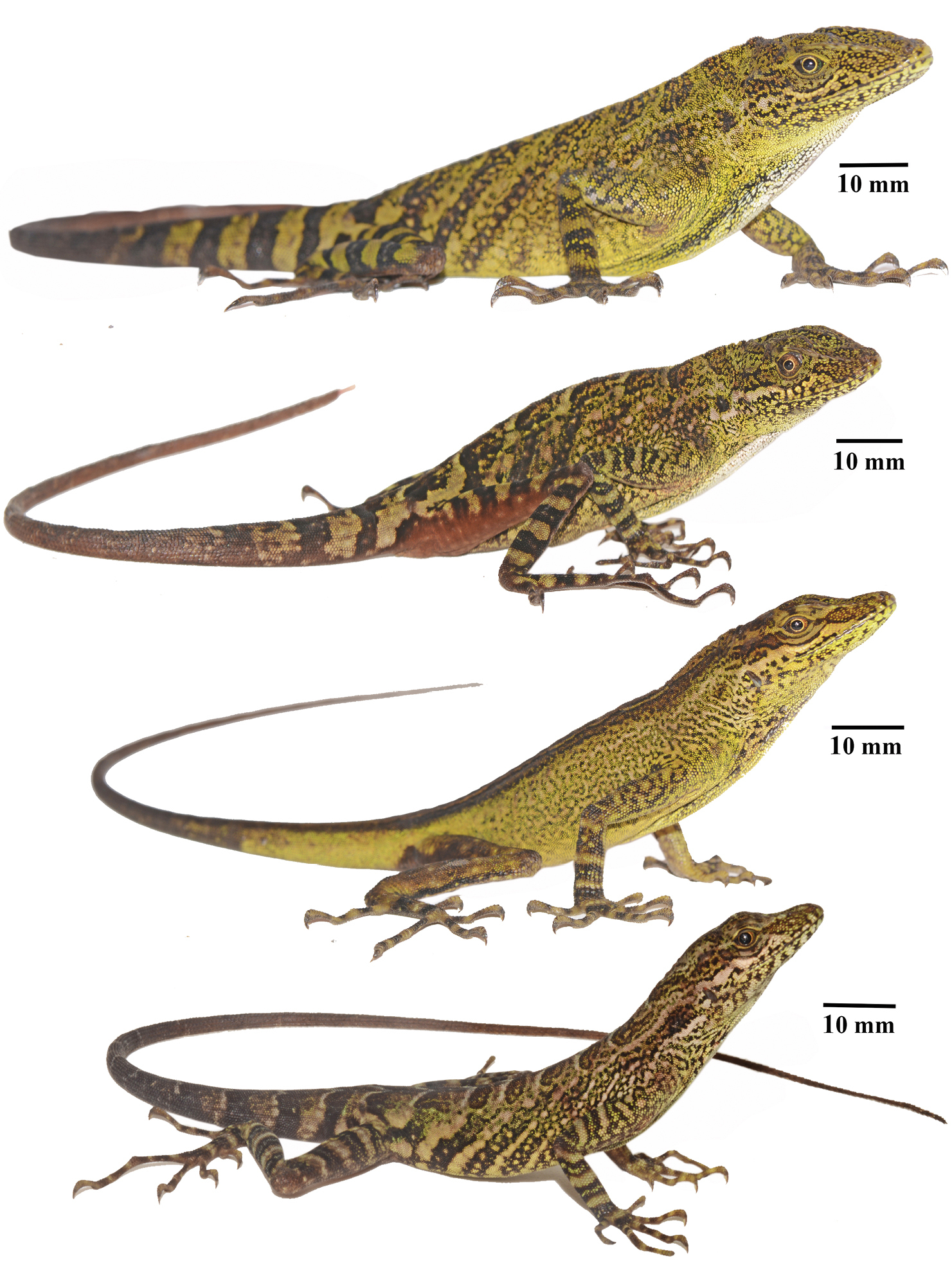
Photo: dhfischer, iNaturalist
We talked about a lot of Ecuadorean anoles last year and this week we’re revisiting South America.
Transverse anoles, Anolis transversalis, are arboreal lizards that can be found in the Eastern Amazon in Ecuador, Peru, Colombia, Brazil, Bolivia and Southern Venezuela.
These anoles are dramatically sexually dimorphic, so much so that the males were initially described as another species, A. buckleyi (O’Shaughnessy, 1880). The females have a larger banding pattern, sometimes with spots in between and are also different in colouring. The females of this species have dewlaps that are different from the males as well, being smaller and with large vertical banding. Male Transverse anoles have smaller, faint banding overlaid with spots and a larger bright yellow-green dewlap with a pattern of spots (sometimes) and small faint lateral stripes.

Photo: Fernando Ayala-Varela, iNaturalist

Photo: Santiago R Ron, BioWeb
Their differences have been noted in previous post on here as well, the differences in their dewlaps.
The average SVL of male Transverse anoles is 88mm, and females is 86mm. They actively defend their territory from other anoles.


















